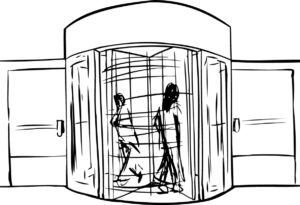Posts Tagged: Chris Micheli
Micheli Files
Questions have often been raised about why there are so many trailer bills needed as part of the budget process in California. The number has grown over the past couple of decades and this has been a recurring concern. However, there is a legal reason for this.
Micheli Files
There have been many court decisions over the past century interpreting key provisions of the Government Code. The following cases highlight some of the key decisions interpreting these statutory provisions. This is Part 2 of a two-part series.
Capitol Spotlight
The Capitol’s Fellows programs are considered some of the toughest to break into, and Erica Costa is no stranger to that challenge. A graduate of the Assembly Fellows Program, followed by over 15 years of public service experience, she was recently named director of the Senate Fellows Program at the Center for California Studies at Sacramento State University.
Capitol Spotlight
Ray LeBov is well known around the Capitol—not just for his prowess as a lobbyist and former legislative counsel but also for his kindness, generosity and joy he brings everywhere he goes. Over the last 50 years, he has shaped the lobbying community, both through his work in the legislature, as a lobbyist and as a mentor to thousands of advocates.
Micheli Files
We’ve all heard the expression “The rules are the rules.” But when it comes to making rules in the state of California, the process has its own labyrinth of, well, rules to guide the process.
Micheli Files
You have questions about the myriad of rules around drafting bills in the California Legislature – we have answers! Or to be more accurate, our good friend Chris Micheli has answers.
Micheli Files
For the 2025 Session, legislators in both houses are subject to a 2-year limit of 35 bills. But did the lower caps actually produce fewer bills this year? In a special edition of the Micheli Files, law professor and lobbyist Chris Micheli took a look a bill intros going back almost two decades to give us that answer.
Micheli Files
There are rules for those leaving government service, which we refer to as the “revolving door” between the public and private sectors. These provisions of the California Government Code are found in the Political Reform Act of 1974, which places restrictions upon legislators and other public officials when they leave government service.
Micheli Files
California’s Office of Administrative Law (OAL) plays several roles concerning the rulemaking activities of the state’s two hundred regulatory agencies, departments, boards, and commissions. There is not just the “regular” rulemaking, but also emergency rulemaking, and even review of “underground” regulations.
Capitol Briefs
The Capitol is abuzz with budget deals and ballot measures. And California again leads the nation in a number of interesting ways. It’s today’s edition of Capitol Briefs!










